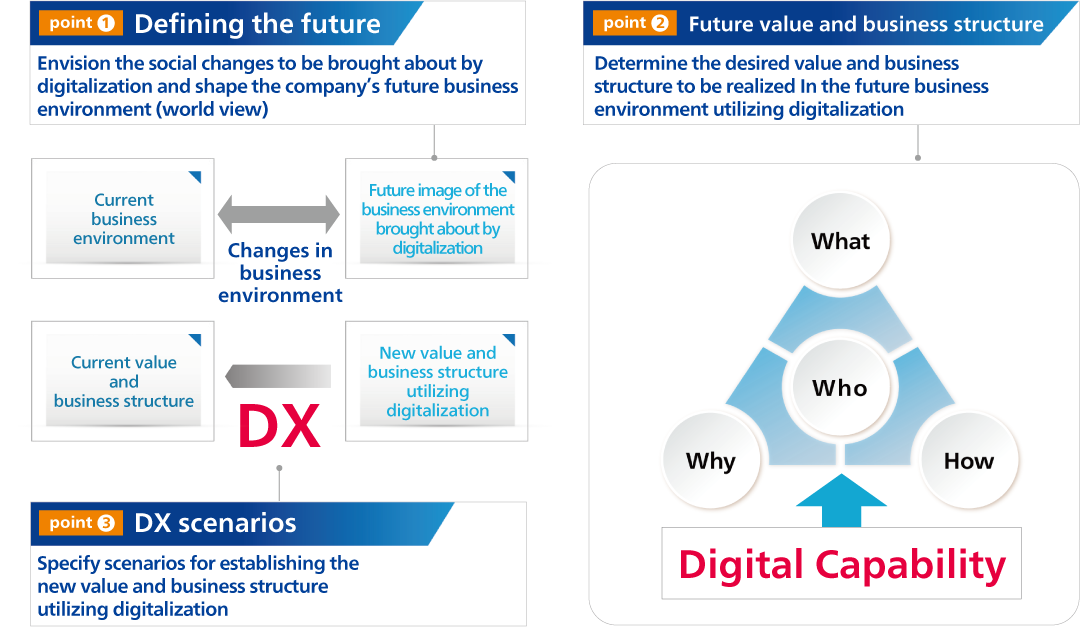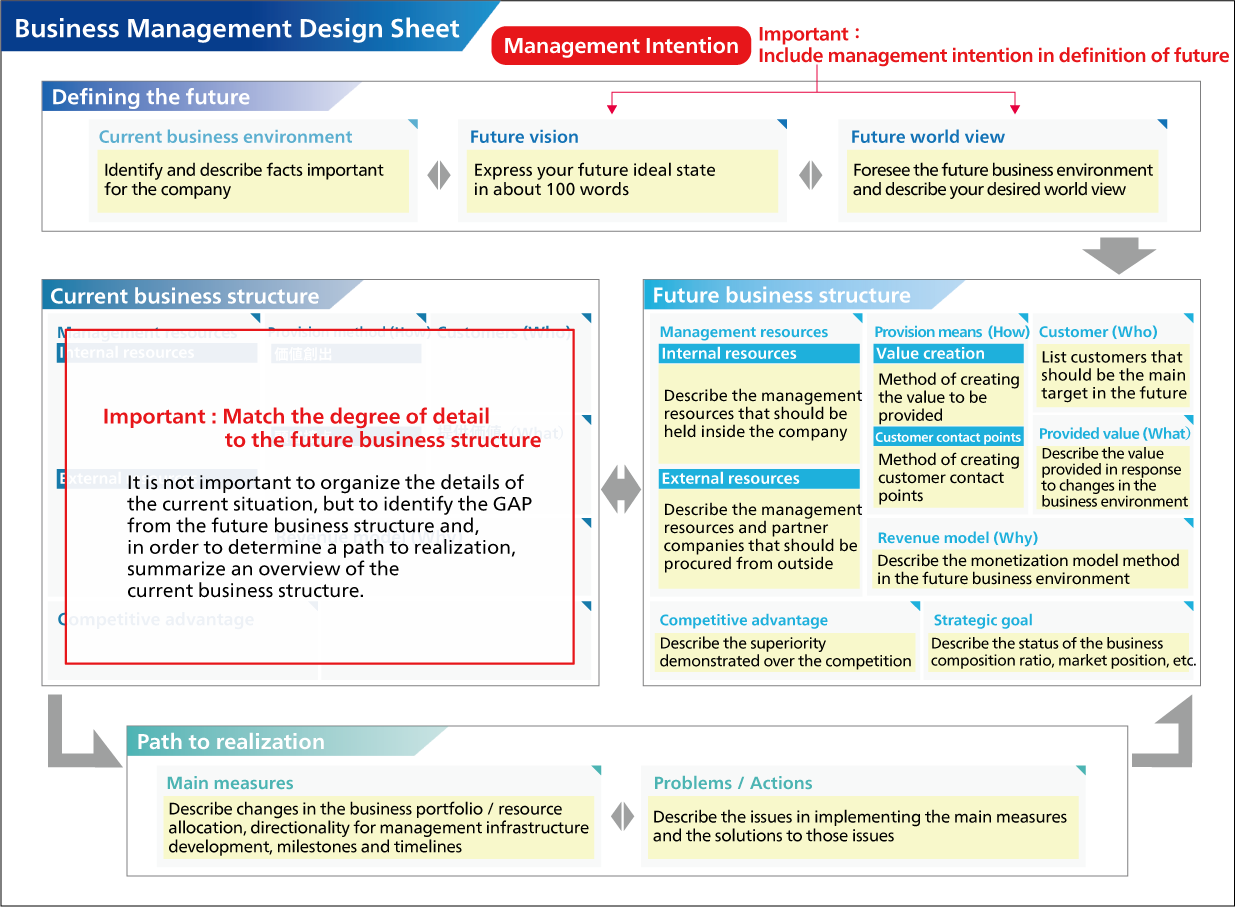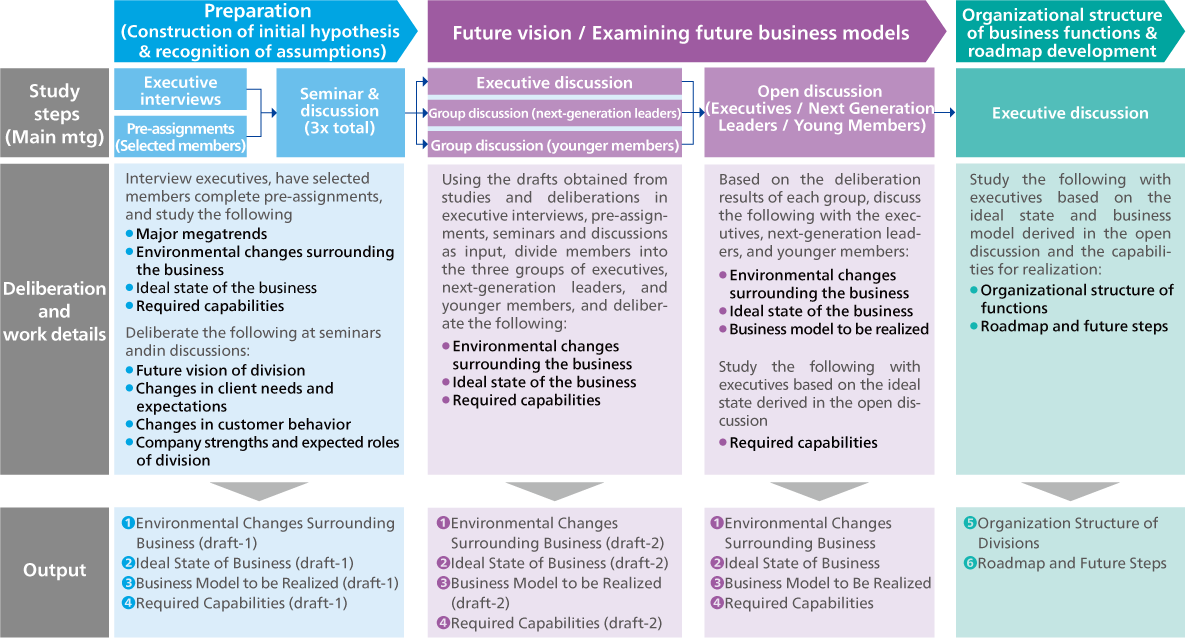During DX vision and scenario formulation initiatives, team members can gain experience that triggers the skill development necessary for future management.
DX visions and scenarios are studied with an eye toward 5 to 10 years in the future, and the ones who execute the specific measures are your next-generation leaders. In the process of studying DX visions and scenarios, those who deliberate the specific measures in the present are ultimately responsible for execution in the future, achieving an effect of heightening the awareness of the next-generation leaders.
Before providing a specific case example, I will first introduce the approach of DX vision formulation advocated by our company.





